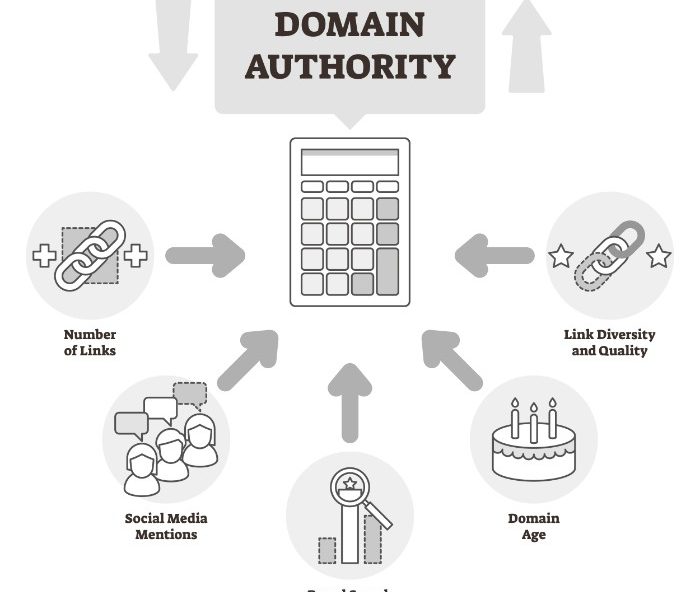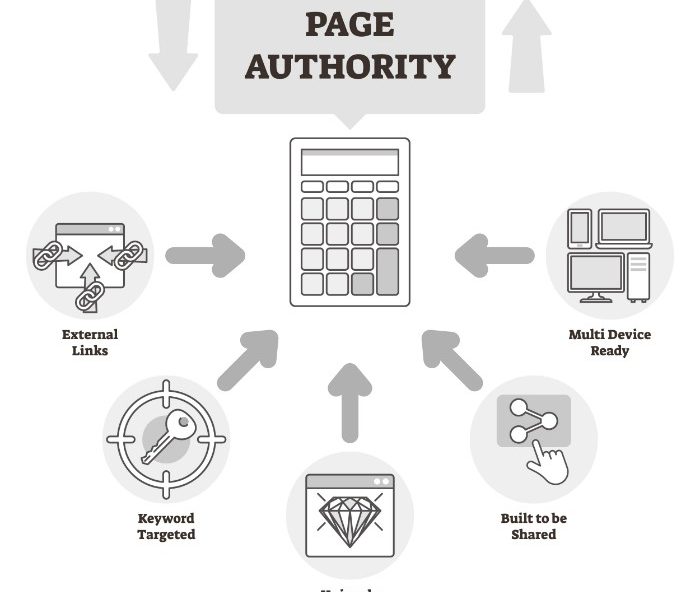
Welcome to our comprehensive guide on mastering dental website’s three level of authority. I’m here to share my expertise and help you boost your practice’s online presence using simple, easy-to-follow steps.
So let’s dive in!
Website authority refers to the level of trustworthiness, relevance, and expertise that search engines like Google assign to a particular website. It’s crucial for dental practices because high website authority can significantly improve your search rankings, leading to increased visibility and attracting more potential patients to your practice. In fact, a study by Chitika found that websites on the first page of Google search results receive 91.5% of the total traffic!
That’s massive, right?
Step 1: First, let’s define website authority. It’s a measure of your website’s online reputation, considering factors like domain age, quality backlinks, and engaging content. A website with high authority is considered a trustworthy and reliable source of information by search engines.
Example: Think of website authority as a credit score. The higher your score, the more likely banks are to lend you money. Similarly, a website with high authority is more likely to rank higher in search results, bringing in more visitors.
Step 2: Now that you know what website authority is, let’s discuss its importance for dental practices. A dental website with high authority will appear higher in search engine results, attracting more potential patients and boosting your practice’s credibility.
Example: Imagine two dental practices in the same city with similar services. The one with a high-authority website will likely rank higher in search results and attract more new patients than its competitor with lower website authority.
As a dental professional, your goal should be to optimize your website for high authority, making it more appealing to both search engines and potential patients.
In this guide, we’ll explore the three levels of authority—domain-level, page-level, and content-level—and discuss proven strategies to help you rank on the first page of Google.
Remember, even if you’re not a tech-savvy person, this guide is designed to be easily understood by anyone. So, buckle up and get ready to elevate your dental practice’s online presence!
Let’s dive into the core of dental website authority, a critical component of advanced SEO for dentists, by exploring its three key levels: domain-level, page-level, and content-level. Don’t worry; I’ll walk you through each level with easy-to-understand examples and step-by-step instructions.
Ready to become an authority pro? Let’s get started!

Domain-level authority refers to the overall credibility and trustworthiness of your entire website, as seen by search engines like Google. It’s crucial to have a strong domain-level authority because it impacts the ranking potential of all pages on your website.
Step 1: Choose a domain name that reflects your dental practice’s name and location. This makes it easier for search engines to recognize your website’s relevance to potential patients.
Example: If your dental practice is called “Smile Clinic” in Springfield, a good domain name could be “smileclinicspringfield.com”.

Page-level authority focuses on the credibility and relevance of individual pages on your website. Each page is assessed independently by search engines, so it’s essential to optimize every page to ensure maximum visibility.
Step 1: Create unique, engaging, and relevant content for each page. Focus on providing valuable information for your audience, like details about your services, team members, and dental tips.
Example: Your “Teeth Whitening” service page should include information about the procedure, benefits, cost, and any aftercare instructions.
Content-level authority looks at the quality, relevance, and depth of the content on each page of your website. By offering valuable, engaging, and informative content, you’ll not only attract more visitors but also build trust with search engines.
Step 1: Research popular dental topics, keywords, and questions that your potential patients may have. Use this information to create in-depth, well-researched content.
Example: Write a blog post about “The Top 5 Benefits of Regular Dental Checkups” that answers common questions, provides useful tips, and cites reputable sources like The American Dental Association.
Now that you know the three levels of authority, it’s time to dive deeper into each level and learn how to optimize your dental website for maximum impact. Don’t forget, we’re here to help you every step of the way with clear instructions, helpful examples, and expert tips to ensure your dental practice shines online!
In this section, we’ll explore domain-level authority in more depth, including its definition, importance, and how to choose the perfect domain name for your dental practice. We’ll also take a look at a successful dental practice domain as a real-life example.
Domain-level authority refers to the trustworthiness, relevance, and credibility of your entire website as perceived by search engines like Google. A higher domain-level authority can improve your search rankings, making it easier for potential patients to find you online.
Step 1: Understand the importance of domain-level authority. A strong domain boosts your website’s credibility and visibility, leading to increased traffic and potential new patients.
Example: A high-authority dental website will rank higher in search results, giving it a competitive edge over practices with lower domain-level authority.
Selecting the perfect domain name is a critical step in building domain-level authority. A good domain name should be memorable, relevant, and easy to spell.
Step 1: Incorporate your dental practice’s name and location into your domain name. This makes it easy for search engines and potential patients to recognize your website’s relevance.
Example: If your dental practice is called “Bright Smiles” in Orlando, a suitable domain name could be “brightsmilesorlando.com”.
Step 2: Avoid using numbers or hyphens, as they can make your domain name harder to remember and spell.
Example: Instead of “bright-smiles123.com”, choose a cleaner domain name like “brightsmilesdental.com”.
Let’s examine a real-life example of a dental practice with a successful domain name: AustinDentalSpa.com. This domain clearly incorporates the practice’s location (Austin) and conveys the dental services offered (Dental Spa). The easy-to-remember domain name helps build domain-level authority and makes it easier for potential patients to find the practice online.
Remember, choosing the right domain name is just the first step towards building a strong domain-level authority. In the next section, we’ll discuss additional strategies to further enhance your dental website’s domain-level authority, making it more appealing to both search engines and potential patients. Keep following along for more expert tips and easy-to-understand guidance!
In this section, we’ll discuss some essential strategies to help you build domain-level authority for your dental practice’s website. With these simple, step-by-step instructions and examples, you’ll be on your way to a more trustworthy and visible online presence.
Search engines prefer websites with longer domain registration periods, as it shows commitment and stability. By registering your domain for a longer period, you can improve your domain-level authority.
Step 1: Choose a domain registrar (e.g., GoDaddy, Namecheap) and register your domain for at least 3-5 years. This signals to search engines that you’re serious about your online presence.
Example: Instead of registering your domain for just one year, opt for a 5-year registration to boost your domain-level authority.

An SSL (Secure Sockets Layer) certificate is crucial for protecting your website’s visitor data and improving your domain-level authority. SSL certificates ensure that data exchanged between your website and its visitors is encrypted and secure.
Step 1: Purchase an SSL certificate from your domain registrar or web hosting provider. Some providers, like Let’s Encrypt, even offer free SSL certificates.
Example: After obtaining an SSL certificate, your website URL will change from “http://” to “https://”, indicating a secure connection for your visitors.
A well-organized site structure improves user experience and makes it easier for search engines to crawl and index your website, boosting your domain-level authority.
Step 1: Plan your website’s structure, ensuring that all pages are easily accessible and logically organized. Aim for a clean hierarchy with main pages (e.g., services, about, contact) and relevant subpages.
Example: Under the “Services” main page, you might have subpages for “Teeth Whitening,” “Dental Implants,” and “Orthodontics.”
Step 2: Use clear and descriptive navigation menus to guide visitors through your website. This improves user experience and helps search engines understand your site’s content.
Example: Create a top navigation menu with links to your main pages, and a footer menu with links to important resources, like your privacy policy and terms of service.
By following these expert tips and easy-to-understand instructions, you’ll be well on your way to building domain-level authority for your dental practice’s website. Keep pushing forward, and don’t forget to check out the next section, where we’ll dive into page-level authority and how to optimize your individual pages for maximum visibility!
In this section, we’ll explore the exciting world of page-level authority, including its definition, importance, and on-page SEO essentials for your dental website. We’ll also look at a real-life example of a well-optimized dental service page.
Page-level authority refers to the credibility, trustworthiness, and relevance of individual pages on your website, as assessed by search engines like Google. Improving page-level authority can boost your search rankings, making it easier for potential patients to find your dental practice online.
Step 1: Understand the importance of page-level authority. Each page on your website should provide valuable information, engage visitors, and be optimized for search engines.
Example: A well-optimized “Dental Implants” service page will rank higher in search results than a poorly optimized one, attracting more potential patients.
On-page SEO (Search Engine Optimization) is the process of optimizing individual web pages to rank higher in search results and attract more traffic. Here are some essential on-page SEO elements for your dental website:
Step 1: Use descriptive and keyword-rich title tags and meta descriptions for each page. This helps search engines understand your content and improves visibility.
Example: For your “Teeth Whitening” service page, a good title tag could be “Teeth Whitening in Miami – Bright Smiles Dental Clinic”.
Step 2: Write high-quality, informative, and engaging content, incorporating relevant keywords throughout. This not only improves your page-level authority but also enhances the user experience.
Example: Create a blog post about “The Benefits of Dental Implants” that answers common questions and provides useful tips, citing reputable sources like The American Dental Association.
Let’s examine a successful, well-optimized dental service page:: sandiego-invisalign.com. This page provides detailed information about the Invisalign treatment, includes patient testimonials, and features a clear call-to-action. Moreover, the page utilizes relevant keywords, high-quality images, and informative videos, all of which contribute to improved page-level authority.
Remember, optimizing each page of your dental website for search engines is crucial for boosting your page-level authority and attracting more potential patients. Keep following along for more step-by-step instructions, helpful examples, and expert insights to help your dental practice shine online!
In this section, we’ll dive into some essential strategies for building page-level authority on your dental website. By following these helpful, step-by-step instructions and examples, you’ll be well on your way to creating a more engaging and search engine-friendly online presence.
Title tags and meta descriptions are crucial for both search engines and users, as they help to understand what your page is about and encourage clicks.
Step 1: Write unique, keyword-rich title tags for each page, keeping them under 60 characters. Make sure they accurately describe your page’s content and include your dental practice’s location.
Example: For your “Dental Crowns” service page, a suitable title tag could be “Dental Crowns in Houston – Sparkling Smiles Clinic”.
Step 2: Create compelling meta descriptions for each page, under 160 characters. Incorporate relevant keywords and include a call-to-action.
Example: A meta description for the “Dental Crowns” page might be: “Get beautiful, durable dental crowns at our Houston clinic. Book your appointment at Sparkling Smiles Clinic today!”
Header tags (H1, H2, H3, etc.) help search engines understand your content’s structure and improve readability for users.
Step 1: Use a single H1 tag for the main heading on each page. This should include relevant keywords and summarize the page’s content.
Example: On your “Teeth Whitening” service page, the H1 tag could be “Professional Teeth Whitening in Chicago”.
Step 2: Utilize H2 and H3 tags for subheadings to organize your content logically. This enhances readability and helps search engines understand your content’s hierarchy.
Example: On your “Teeth Whitening” page, H2 tags might include “The Teeth Whitening Process” and “Benefits of Professional Teeth Whitening”.
A well-organized URL structure and strategic internal linking can improve user experience and boost your page-level authority.
Step 1: Create clean, descriptive URLs that include relevant keywords and are easy to read.
Example: Instead of a URL like “yoursite.com/services/p123”, opt for a more descriptive URL like “yoursite.com/services/teeth-whitening”.
Step 2: Implement internal linking to connect related pages on your website, guiding users to more relevant content and helping search engines crawl your site more efficiently.
Example: In a blog post about teeth whitening, include a link to your “Teeth Whitening” service page to encourage users to explore further and book an appointment.
By following these expert tips and easy-to-understand instructions, you’ll be well on your way to building page-level authority for your dental practice’s website. Keep up the great work, and stay tuned for more valuable insights and guidance in the next section!

In this section, we’ll delve into content-level authority, exploring its definition, importance, and how to create valuable content for your dental website. We’ll also look at an in-depth dental blog post to help inspire you. Let’s jump right in!
Content-level authority refers to the credibility and value of the content on your website. High-quality, informative, and engaging content can improve your site’s search rankings and attract more potential patients.
Step 1: Understand the importance of content-level authority. The more valuable your content, the more likely it will rank higher in search results and appeal to your target audience.
Example: A detailed, well-researched blog post on “The Benefits of Dental Implants” can help establish your dental practice as a trusted authority in the field.
To create valuable content, you’ll need to understand your target audience and provide information that addresses their needs and interests.
Step 1: Identify your target audiences, such as families, seniors, or cosmetic dentistry patients. Consider their specific concerns and preferences.
Example: If you specialize in pediatric dentistry, create content that addresses common concerns of parents, like “5 Tips for Your Child’s First Dental Visit.”
Step 2: Develop informative, engaging, and easy-to-understand content that speaks to your target audience. Use images, videos, and infographics to support your content and enhance user experience.
Example: Create a “Dental Health Guide for Seniors” that includes helpful tips, dental care recommendations, and illustrative visuals.
Let’s take a look at an exemplary dental blog post.
This post provides an in-depth understanding of gum disease, its causes, and treatment options. It uses simple language, incorporates relevant keywords, and cites authoritative sources like the American Dental Association. By following this example, you can create high-quality content that boosts your dental practice’s content-level authority.
In summary, focusing on content-level authority is crucial to establishing your dental practice as a credible and trusted resource for potential patients. Keep up the fantastic work, and stay tuned for more helpful tips and expert advice in the next section!
In this section, we’ll explore some essential strategies for building content-level authority on your dental website. Follow these helpful, step-by-step instructions and examples to create content that appeals to your audience and ranks well on search engines. Let’s get started!
Strategic use of keywords can help your content rank higher in search results and reach your target audience.
Step 1: Conduct keyword research using tools like Google Keyword Planner to identify relevant, high-search-volume keywords related to your dental services.
Example: If you offer dental implants, target keywords like “dental implants near me” or “best dental implants in [your city]”.
Step 2: Incorporate these keywords naturally throughout your content, including headings, subheadings, body text, image captions, and meta tags.
Example: For a blog post about teeth whitening, use your target keywords in the title, H2 tags, and a few times in the body text.
Multimedia elements can enhance your content’s appeal and make it more engaging for users.
Step 1: Add relevant images, videos, or infographics to your content to support your text and improve the overall user experience.
Example: In a blog post about orthodontic treatments, include a video demonstrating how to clean braces or an infographic comparing different types of braces.
Step 2: Optimize your multimedia elements for SEO by using descriptive file names, compressing file sizes, and adding alt tags with relevant keywords.
Example: For an image of dental veneers, use a file name like “dental-veneers-smile-makeover.jpg” and an alt tag like “dental veneers for a perfect smile.”
Promoting social sharing and engagement can help your content reach a wider audience and boost your content-level authority.
Step 1: Add social sharing buttons to your blog posts and articles, making it easy for users to share your content on platforms like Facebook, Twitter, and Pinterest.
Example: Use a plugin like AddThis or ShareThis to easily integrate social sharing buttons into your dental website.
Step 2: Encourage user engagement by ending your content with a question, inviting comments, or asking for feedback. Respond to comments and questions to foster a sense of community and trust.
Example: At the end of a blog post about pediatric dentistry, ask readers to share their own tips for making their child’s dental visits more enjoyable.
By implementing these expert tips and easy-to-understand instructions, you’ll be well on your way to building content-level authority for your dental practice’s website.

In this section, we’ll explore the vital role of backlinks in website authority and share some strategies for obtaining high-quality backlinks for your dental practice’s website. With our helpful, step-by-step instructions and examples, you’ll be on your way to boosting your site’s authority in no time. Let’s dive in!
Backlinks, or inbound links from other websites, play a significant role in building your website’s authority. Search engines like Google view backlinks as endorsements, and having high-quality backlinks can improve your site’s rankings and credibility.
Step 1: Understand the importance of backlinks. They act as votes of confidence from other websites, signaling to search engines that your dental practice’s website is a trusted resource.
Example: A backlink from a respected dental association or a popular dental blog can significantly boost your website’s authority.
Follow these steps to attract high-quality backlinks and increase your website’s authority:
Step 1: Create valuable, share-worthy content that appeals to your target audience and other websites in your niche.
Example: Publish an in-depth guide on “How to Choose the Right Orthodontist” that other dental websites might link to as a helpful resource.
Step 2: Reach out to other reputable dental websites, blogs, or industry influencers to share your content, request guest posting opportunities, or collaborate on projects.
Example: Email the editor of a popular dental blog with a brief introduction to your practice and a link to your latest blog post, asking if they’d consider sharing it with their audience.
Step 3: Participate in online dental communities and forums, providing helpful advice and insights, and including a link to your website in your profile or signature.
Example: Join a dental forum like Dentaltown and contribute valuable insights, fostering relationships and earning backlinks from other members.
By following these easy-to-understand steps and examples, you’ll be well on your way to attracting high-quality backlinks and boosting your dental website’s authority. For more advanced link building tips, read our next article titled “Advanced Backlink Strategies For Dental Websites“.

In this section, we’ll explore how to monitor your dental practice’s website authority by using various tools and metrics. We’ll also discuss the importance of keeping track of your competitors. Our helpful, step-by-step instructions and examples will ensure you can easily measure your progress and stay ahead of the competition.
Measuring your website’s authority is crucial to understanding how well your efforts are working. Here are some essential tools and metrics to help you monitor your progress:
Step 1: Use Moz’s Domain Authority metric to gauge your overall website authority. Domain Authority (DA) is a score ranging from 0 to 100, with higher scores indicating greater authority.
Example: Check your dental practice’s DA regularly and aim to improve it over time by implementing the strategies outlined in this guide.
Step 2: Utilize Google Analytics to monitor your website traffic, user behavior, and other essential metrics. Keep an eye on organic search traffic, bounce rate, and session duration to understand how visitors are interacting with your site.
Example: Identify pages with high bounce rates or low session durations and optimize them to improve user experience and increase your website’s authority.
Keeping an eye on your competitors is vital to staying ahead in the online dental space. Here’s how you can track your competitors’ website authority:
Step 1: Identify your primary competitors by searching for dental practices in your area, focusing on those with a strong online presence.
Example: Look up “dentist near me” or “orthodontist in [your city]” on Google to find local competitors.
Step 2: Use tools like SEMrush or Ahrefs to analyze your competitors’ website authority, backlinks, and keyword rankings.
Example: Enter your competitor’s domain into SEMrush’s search bar to get an overview of their website’s performance.
Step 3: Learn from your competitors’ successes and weaknesses. Implement strategies they’ve used successfully and avoid tactics that aren’t working for them.
Example: If a competitor has a high-authority blog with valuable content, consider creating your own dental blog and sharing useful information to attract traffic and backlinks.
By following these straightforward steps and examples, you’ll be able to monitor your dental practice’s website authority effectively, make informed decisions, and stay ahead of the competition.

Let’s talk about online reviews and why they’re so important for dental practices. I’ll walk you through step by step on how to encourage patients to leave reviews, and how to handle negative ones. Trust me, by the end of this section, you’ll see the real power of online reviews.
Online reviews are a game-changer for dental practices because:
Follow these steps to encourage patients to leave reviews:
Step 1: Create profiles on popular review platforms like Google My Business, Yelp, and Facebook.
Example: Set up a Google My Business page with your practice’s name, address, phone number, and website.
Step 2: After each appointment, ask patients for feedback and request them to leave a review.
Example: Send an email or text message with a link to your review profiles and a polite request to leave a review.
Step 3: Make it easy for patients to leave reviews by providing clear instructions and direct links on your website, social media, and marketing materials.
Example: Add a “Review Us” button on your website’s homepage linking to your Google My Business page.
Don’t worry! Negative reviews happen to everyone. Here’s how to handle them:
Step 1: Stay calm and take a step back. Assess the situation objectively and avoid responding defensively.
Example: Read the review carefully and identify the core issue the patient faced.
Step 2: Respond to the review professionally and politely. Apologize for the inconvenience and offer a solution.
Example: “We’re sorry to hear about your experience. We’d like to make things right. Please contact our office so we can discuss a resolution.”
Step 3: Learn from the feedback and implement changes to avoid similar issues in the future.
Example: If a patient complains about long wait times, evaluate your scheduling system and make adjustments to improve efficiency.
By understanding the power of online reviews and following these steps, your dental practice can build trust, attract more patients, and maintain a positive online reputation.

It’s crucial to track your progress and make adjustments to your website strategy. In this section, I’ll guide you through using A/B testing and analytics to optimize your dental practice’s online presence.
To make the most of your strategy, follow these steps:
Step 1: Set measurable goals for your website, such as increasing new patient appointments or reducing bounce rates.
Example: Aim for a 20% increase in online appointment bookings within six months.
Step 2: Regularly review your website’s performance using analytics tools and track your progress towards your goals.
Example: Check your website’s traffic, conversion rates, and user behavior in Google Analytics every month.
Step 3: Identify areas that need improvement and test different approaches to optimize your website.
Example: If your appointment booking page has a high bounce rate, try changing the layout, adding more information, or simplifying the booking process.
Here are some top tools for analyzing your website’s performance:
By tracking your progress, making adjustments, and using these fantastic tools, you can optimize your dental practice’s website for better results. Remember, the key is to continuously learn and adapt.
Congratulations on completing this guide! You’ve learned a ton about boosting your dental practice’s website authority. Let’s encourage you to keep growing and improving.
Throughout this resource, we’ve covered the importance of website authority for dental practices and how to optimize domain-level, page-level, and content-level authority. We’ve also discussed the role of backlinks, online reviews, and the power of A/B testing and analytics in improving your dental website’s authority.
By implementing these strategies and staying committed to growth, you’re on the path to building a strong online presence that will attract more patients to your practice.
Don’t forget that success in website authority is an ongoing process. Stay consistent, continue to learn, and be open to adapting your strategy as needed. Always strive to provide value to your audience, and your dental practice will reap the rewards.
Need help along the way? Prosites is here to support your dental practice’s growth with our expert website design and marketing services. To learn more, visit Prosites and see how we can help elevate your online presence.